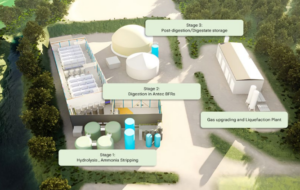“A changing feedstock mix in biogas production requires new plant designs”

Increasingly, countries worldwide are implementing strict regulations for managing municipal organic waste and waste from animal production, contributing to diverse biological waste products entering the biogas industry as part of the feedstock mix. However, these substrates vary in availability and quality, leading to significant variations in properties that most biogas plants are not equipped to handle.
This results in biological instability and reduced production, particularly due to high protein content and increased organic load ratio when treating such substrates.
Waste-based biogas substrates have high energy density and often high dry matter, but their variability and impurities, like municipal organic waste, lead to operational challenges and sedimentation in the digester.
This sedimentation causes issues, including operational...

















